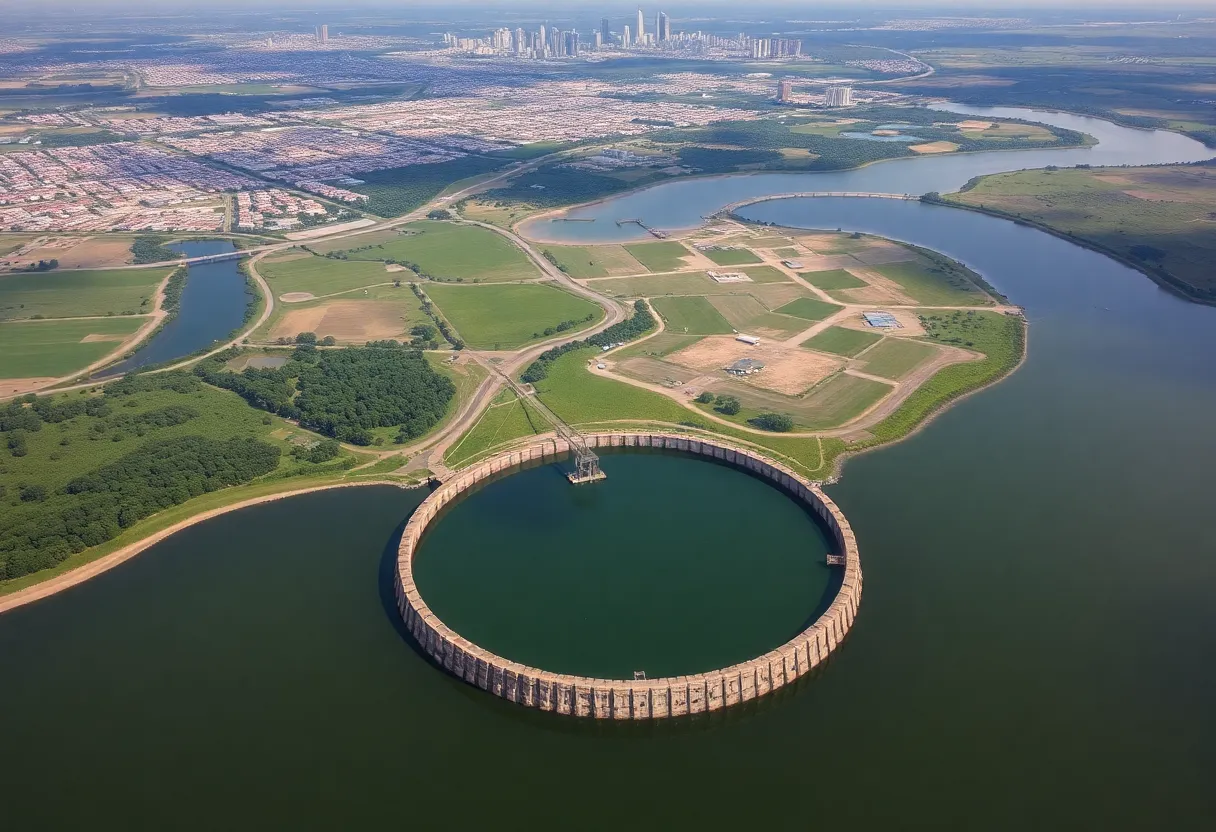News Summary
Georgetown’s ambitious $1 billion water project, aimed at meeting the city’s soaring water demand, has ignited legal battles and community concerns. The project involves tapping into the Simsboro Formation aquifer but faces opposition from neighboring regions worried about depletion of their water resources. As Georgetown continues to grow rapidly, the implications of this project could have lasting effects on water availability in Central Texas. Local officials and lawmakers are seeking alternative solutions amid the brewing resource crisis.
Central Texas Water Wars: Georgetown’s $1 Billion Project Creates Controversy!
In the heart of Central Texas, the city of Georgetown finds itself at the center of a brewing storm over a groundbreaking water project that is stirring up legal drama and community concerns. This ambitious endeavor, with a staggering price tag of $1 billion, aims to secure a consistent water supply amid the region’s rapid urban growth. With Georgetown recently crowned the fastest-growing city in America for three consecutive years, the demand for water has reached a fever pitch.
A Deep Dive into the Water Wars
In 2023, Georgetown signed a significant contract to tap into the Simsboro Formation of the Carrizo Wilcox Aquifer, located 80 miles east, to import large volumes of water. This decision, however, has kicked off a legal battle with neighboring cities, including Bryan and College Station, alongside the Texas A&M University System. They are all rallying together in a lawsuit aimed at halting the project, emphasizing that it poses a serious threat to their own water supply.
Impending Legal Showdown
A trial pertaining to this contentious lawsuit is set to begin in the first week of May, and tensions continue to rise as local officials voice their concerns. Officials from Bryan have raised alarms about how this project could deplete the water resources that are crucial for the survival and economic vitality of the cities involved. With the project capable of pumping an impressive 89 million gallons of water per day, it represents three times the daily water consumption of Bryan alone—a staggering statistic!
Seeking Alternatives
As the controversy unfolds, lawmakers are fervently advocating for alternative water supply solutions. Proposals such as desalination and enhanced water treatment techniques have been bandied about, yet many of these strategies remain years away from being put into practice. The current regulatory landscape surrounding water management is intricate and fragmented, governed by various groundwater conservation districts that often struggle with limited resources and authority. This situation complicates efforts to ensure a sustainable water future for the region.
The Legal Framework and Challenges
Within Texas, the legal rights of landowners to extract groundwater complicate regulatory measures aimed at curtailing potential over-extraction. Developers of the Georgetown project assert that they are adhering to all necessary legal guidelines. However, local officials remain critical, worried about the long-term implications of such extraction on future water availability.
A Market Fuelled by Urban Demand
The Upwell Water project has emerged against a backdrop of soaring demand for water supplies in bustling urban areas, with landowners eager to capitalize on their groundwater rights. This development echoes a historical trend of water exportation attempts dating back to a 1998 initiative by San Antonio, highlighting an ongoing rush for access to groundwater resources.
Past Efforts and Current Realities
The Texas Legislature took steps to create groundwater conservation districts in 2001, yet these entities have often been overshadowed by powerful interests that favor groundwater exports over conservation efforts. The consequences of these policies have been apparent, with significant drops in groundwater levels and impending restrictions on water extraction looming if conservation thresholds are reached.
Facing a Resource Crisis
The current conflict paints a vivid picture of a critical resource crisis brewing just beneath the surface. As groundwater levels continue to dwindle due to relentless over-extraction, both urban and rural communities are left grappling with an uncertain future. The ongoing water wars in Central Texas highlight the urgent need for sustainable solutions to secure the lifeblood of communities in a region that is both thirsty for growth and facing complicated challenges.
Deeper Dive: News & Info About This Topic
HERE Resources
Additional Resources
- Source NM: Mediation in Rio Grande Legal Fight
- Wikipedia: Water Rights
- Texas Border Business: Cornyn Statement on IBWC Mexico Agreement
- Google Search: Rio Grande Water Dispute
- NM Political Report: SCOTUS Rejects Resolution to Water Dispute
- Google Scholar: Rio Grande Water Dispute
- KXAN: Texas Farmers Warn of Water Impact
- Encyclopedia Britannica: Rio Grande
- France 24: US Refuses Water Request for Mexico
- Google News: Texas and New Mexico Water Conflict







